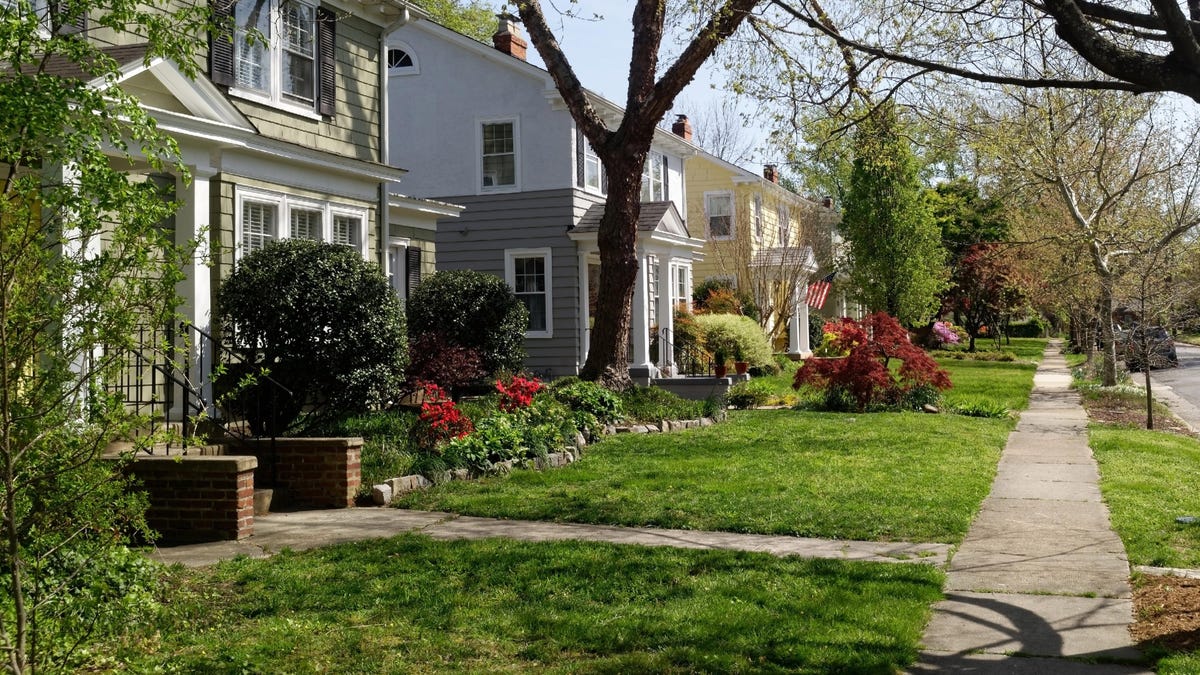Kill Your Lawn for Free (and Replace It With Something Better)

If you love your lawn, fine, but maybe hear me out: lawns are the worst . Even if you don’t mind watering, mowing, and chemicals, most lawns, including yours, are terrible.
Partial list of why lawns are terrible
Grass, like a plant, costs nothing. It is a monoculture, which means there is no diversity and they are more susceptible to disease because they lack protection from other plants. Biodiversity is why we plant nasturtiums next to vegetables – to protect vegetables – and the lack of such diversity is why people often treat their lawn with chemicals.
Lawns also do nothing for pollinators or animals, and often harm the surrounding wildlife with the same chemicals that are absorbed by the soil and plants nearby. Lawns deprive the soil of nutrients and constantly need fertilizer. Chemicals and fertilizers often end up in runoff that pollutes our waterways and harms aquatic life. Lawns require a lot of water, time, effort and money. Lawns just suck .
Be smart killing your lawn
Don’t use chemicals to kill your lawn. If you want to benefit the soil, waterways, and surrounding wildlife, using chemicals obviously won’t do the trick.
The lesser evil, which you might also regret, is landscape fabric. Laying this black propylene is problematic for the soil and will end up being a problem for you. Once stapled, it’s almost impossible to pick it up again, and it also crumbles, adding plastic to the soil, so any future plants will have to contend with both plastic and compacted, starving soil. Every gardener I know has eventually had to pull this nightmare out of their yard, and the irony is that it still doesn’t actually stop the weeds. They sprout, practically giving you a thumbs up.
How to kill your lawn for free
You can rent sod cutters, but they are bulky and expensive. You can also turn over your entire lawn with a shovel, but this is a very time consuming process. Both of these methods are quite good from an environmental point of view. But you can simply mulch your lawn, which is easy and free.
Sheet mulching is covering the ground with cardboard or something else that easily decomposes. Cardboard is a good, durable material that blocks the sun and oxygen from reaching your lawn, and when they don’t have enough of both, the grass will die, or better yet, turn into compost. The cardboard will also, usually after a season or two, stick out long enough to kill the lawn. And since everything is composted on site, it nourishes the soil, creating microbes, mycorrhiza (good fungus), and creating food for worms. This will also create pockets in the soil for other beneficial insects, and with worms and insects, birds and other small animals will appear.
And the cardboard is basically free. Use your Amazon boxes that you usually throw away, ask your neighbors or your local grocery store for them. Remove tape and staples and use only uncoated card stock (if it’s shiny, don’t use it). Lay it down, layering the ends, and make sure every spot is covered. Multiple layers is good.
Reasonable people can agree that a yard full of cardboard won’t win the hearts and minds of your neighbors, so cover the cardboard (also free) with wood shavings . These chips will provide a uniform layer of mulch on your sheet, help hold the cardboard in place, and hide the ugliness underneath. The wood chips will also compost for several years, helping to create rich soil.
You can plant in your chips after the season. As you dig, you’ll see what’s left of the white-coated cardboard, mold and mycorrhiza, a sign of healthy soil. These chips will break after a year or two and you can keep putting new chips on them if you like the look. In my opinion, they are pleasant to walk on, and they keep the ground pleasant and cool.
If you want to plant groundcover or alternative turf, you can do so. After a year, rake out the remaining large wood chips and you will be surprised to see how much has already decayed, leaving small wood chips and compost. Add some more compost and plant the ground cover directly into it. There are also many companies now, such as PT Lawn , who specialize in alternative turfs of all kinds, from park mixes to pastures. These diverse mixes look great, nourish the soil and pollinators, and require less water and shearing.